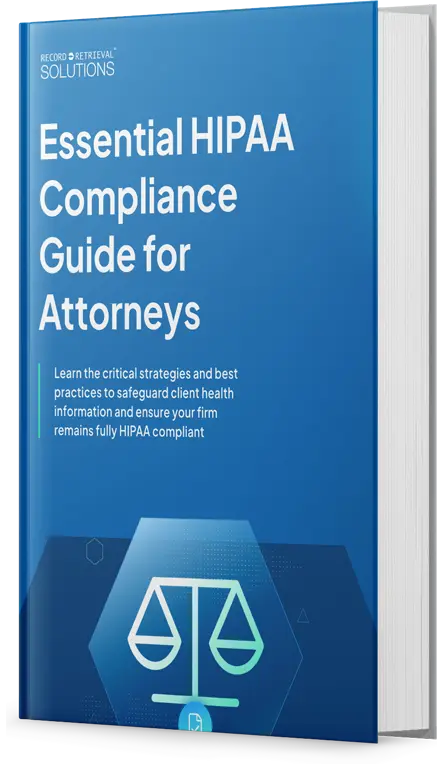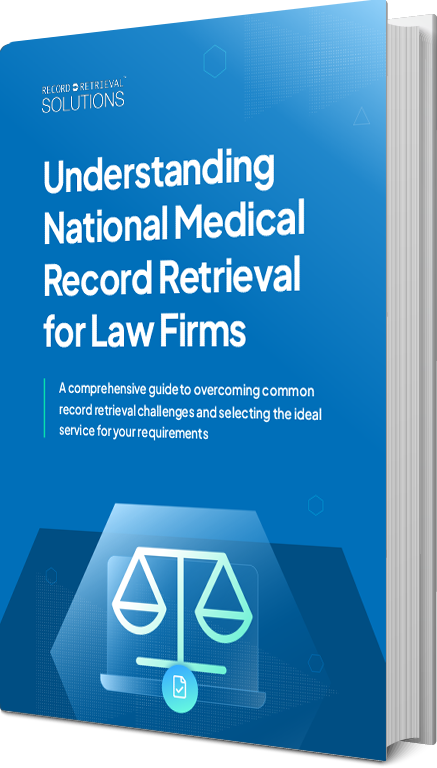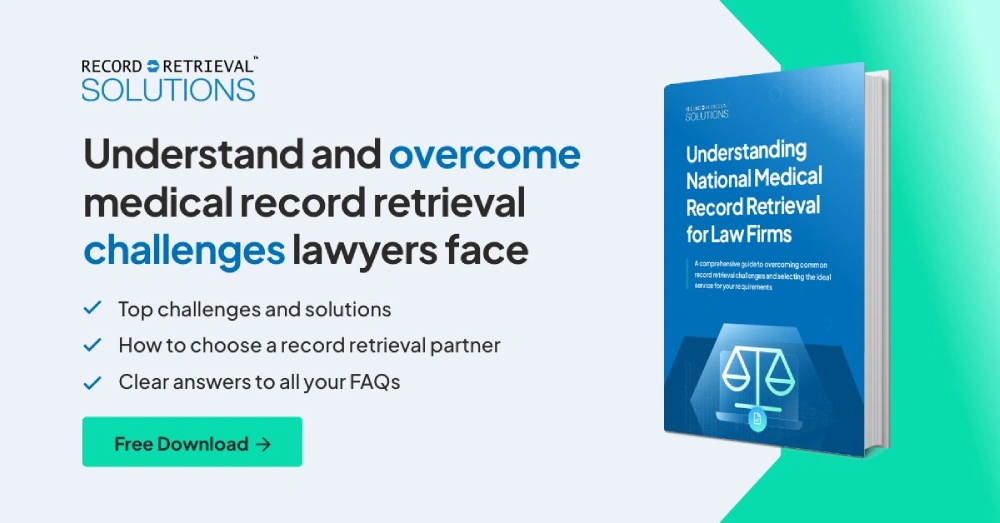Comprehending medical underwriting is crucial for legal professionals whose clients navigate these waters.
With the stakes high and potential risks ever-present, grasping this process empowers you and enhances your ability to advocate effectively for clients.
Medical underwriting is a critical gatekeeper in insurance, determining how individual health conditions impact coverage and premiums. As it applies to various insurance markets—be it for individual, small group, or significant group coverage—its importance becomes immediately apparent, especially for those representing clients with unique health histories or pre-existing conditions.
This comprehensive guide will delve into the intricacies of the medical underwriting process. From understanding the different types of underwriting to exploring the application steps and debunking common misconceptions, this article aims to equip you with the knowledge needed to navigate this complex yet essential aspect of insurance law.
Definition of Medical Underwriting
Medical underwriting is a critical process insurance companies use to evaluate an applicant’s risk level for coverage approval and to determine premium rates.
This assessment considers factors such as age, medical history, and, occasionally, occupational risk. The objective is to gauge the applicant’s insurability and decide the cost implications of offering them a policy.
Here’s a quick look at the key factors considered in medical underwriting:
- Age: Older applicants might pose a higher risk.
- Medical History: Conditions like heart disease or previous surgeries.
- Occupation: Jobs with higher risks may influence the decision.
The enactment of the Affordable Care Act (ACA) curtailed the use of medical underwriting in individual and small-group health insurance plans, aiming to make healthcare more accessible. However, it remains essential for certain products, like short-term health insurance for personal life and disability insurance.
Additionally, Medigap insurers may apply medical underwriting when applicants seek coverage outside the initial enrollment period.
Understanding medical underwriting is crucial for navigating the individual insurance market and ensuring that potential clients, especially those with pre-existing conditions, receive fair evaluation and coverage options.
Importance of Medical Underwriting in Insurance
Medical underwriting plays a pivotal role in the insurance industry. It assesses the risk associated with an applicant’s health insurance application.
This process thoroughly evaluates an applicant’s medical history and lifestyle habits, enabling insurers to determine eligibility and set appropriate premium rates.
Although the ACA limited medical underwriting in individual and small group markets, it remains crucial for short-term health insurance and personal life or disability insurance.
Insurers use medical underwriting to manage the financial risks of covering pre-existing conditions. This could result in higher premiums or the exclusion of certain conditions from coverage.
The methods employed in medical underwriting can vary. Full medical underwriting involves a detailed review of the client’s health information, while moratorium underwriting offers a more streamlined approach.
Here’s a quick overview of medical underwriting practices:
Underwriting Method | Description |
Full Medical Underwriting | Detailed investigation of health history |
Moratorium Underwriting | More straightforward risk assessment with conditional coverage |
Medical underwriting remains integral for insurers to make informed decisions, ensuring financial stability and fair premium pricing in the individual insurance market.
Applicability of Medical Underwriting Across Insurance Markets
Medical underwriting is a critical tool for insurance carriers. It allows them to assess applicants’ health risks and set premium rates, safeguarding financial stability.
It has evolved significantly due to legislative changes, notably the ACA, which curbed its prevalence in individual and small-group health insurance markets.
However, exceptions persist where medical underwriting remains vital, particularly in short-term health insurance and individual life or disability insurance.
Insurers use medical underwriting to avoid scenarios where individuals seek low premium rates while experiencing health issues. This risk management approach involves a comprehensive collection of health data from applicants, focusing on past medical conditions and treatments.
Such information profoundly influences coverage decisions and cost determination, underscoring the method’s ongoing relevance across various insurance markets.
Individual Insurance Coverage
Before the ACA, medical underwriting in the individual insurance market often led to coverage denials or inflated premiums for applicants with pre-existing conditions.
During that time, approximately five million uninsured individuals were deemed uninsurable due to health issues. An industry survey in 2004 revealed that about 13% of applicants faced denial, with rejection rates considerably higher for older individuals.
However, ACA reforms introduced guaranteed issue provisions, prohibiting rejection based on medical history and restricting enrollment to specific periods.
While insurers in the individual market must now accept all applicants regardless of medical history, they are still barred during non-enrollment periods, which underscores a balance between access and regulatory compliance.
This shift has significantly increased access to health insurance, protecting consumers from discrimination based on pre-existing conditions.
Small Group Insurance Coverage
Historically, medical underwriting has been prominent in setting premiums for small-group health insurance plans, often using the group’s collective health data.
With the implementation of the ACA in 2014, such practices were abolished, guaranteeing issues for small-group plans. Current premium variations are solely based on objective factors like enrollees’ age, location, and tobacco use—not an individual’s or group’s health history.
The ACA aimed to enhance health insurance access and protect individuals within small groups from being denied coverage due to pre-existing conditions.
Nevertheless, while small-group insurance largely adheres to ACA mandates, medical underwriting continues in other insurance types not governed by the ACA.
Large Group Insurance Coverage
In large-group insurance coverage, premium calculations are influenced by the group’s overall claims history, potentially escalating costs for groups with adverse health profiles.
However, individual employees benefit from guaranteed issue policies, where premiums remain unaffected by personal medical histories.
Many medium to large employers opt for self-insurance rather than acquiring plans from traditional insurers, demonstrating a prominent trend in benefit management.
Despite the ACA’s impact on individual and small-group markets, large-group coverage rules remained relatively unaltered.
Here, the collective medical history of the group plays a role in premium assessment, although individual health history directly does not.
Medical underwriting’s application across various insurance markets underscores its importance in risk management and premium determination while highlighting ongoing legislative and market-driven changes.
The Role of Pre-existing Conditions in Underwriting
Medical underwriting is a critical process where insurance companies assess an applicant’s health history to evaluate coverage options and determine premium rates.
A significant focus of this process is pre-existing medical conditions, which can lead to higher premiums or exclusions.
Historically, insurers employed post-claims underwriting, investigating submitted claims in the first year to identify undisclosed pre-existing conditions. This often resulted in policy rescissions, with significant legal implications for both parties.
Moratorium underwriting is standard. Unless there is a two-year symptom-free period, it excludes any condition experienced within five years of the policy’s start date. This approach aims to balance risk management with fair coverage.
To better understand underwriting’s impact on premiums and coverage, consider the following key points:
- Increased Premiums: Individuals with pre-existing conditions generally face higher premiums due to elevated risk.
- Policy Rescissions: Failure to disclose medical history can lead to canceled policies.
- Moratorium Underwriting provides coverage after a symptom-free period, offering a path for those with pre-existing conditions to gain insurance.
Understanding these elements is crucial for legal professionals handling insurance claims and disputes. It ensures they can effectively navigate the complexities of health insurance policies and underwriting processes.
Types of Medical Underwriting
Two primary types of medical underwriting are used: Moratorium and Full Medical Underwriting. Each has distinct approaches and implications for applicants.
Moratorium Underwriting
Moratorium Underwriting offers a simplified, quicker application process by generally not requiring detailed medical forms.
Under this method, pre-existing medical conditions are excluded from coverage for a specified period—typically requiring a rolling two-year symptom-free interval.
After this moratorium period, individuals may qualify for coverage of these formerly excluded conditions if no symptoms or treatments have occurred.
This system is well-suited for healthy applicants who do not anticipate facing significant medical issues. However, chronic or regularly treated conditions are often not covered, posing challenges for those unable to maintain a symptom-free state.
Key Features:
- Exclusion Period: Typically requires a two-year symptom-free phase.
- Application Ease: No detailed medical questionnaire is usually needed.
- Target Audience: Attracts healthy individuals seeking quick policy setup.
- Limitations: Chronic conditions may remain uncovered.
Full Medical Underwriting
Full Medical Underwriting (FMU) demands a comprehensive review of the applicant’s medical history at the onset.
This approach enables insurers to customize coverage terms. It also allows insurers to cover pre-existing conditions that could otherwise be excluded under moratorium underwriting, thus offering greater peace of mind. Subject to the applicant’s consent, insurers may contact their general practitioner for deeper insights into their health history.
Applicants gain clarity about their coverage scope upfront, facilitating effective financial planning for potential medical treatments.
Key Features:
- Detailed Analysis: Involves submission of complete health history.
- Potential Coverage for Pre-existing Conditions: Offers broader coverage options.
- Transparency: Clear terms regarding coverage and exclusions.
- Family Applications: Requires detailed disclosures for all family members.
In summary, both Moratorium and Full Medical Underwriting have distinct processes tailored to different applicant needs. Legal professionals and life sciences businesses must understand these differences to navigate the complexities of health insurance policies and help clients make informed decisions.
The Application Process: What to Expect
The initial step in applying for health insurance is completing an application, which can be done online through a quote system or over the phone with a sales adviser. Applicants can choose between Moratorium Underwriting and Full Medical Underwriting.
Once submitted, sophisticated computer systems assess the application, evaluating the provided information before an underwriting team examines it more closely.
This step is critical, as medical underwriting examines an applicant’s health history. The outcome significantly affects coverage options and premium rates.
A comprehensive health history review helps insurers determine a potential policyholder’s risk level. Those with a history of pre-existing medical conditions, such as heart disease, may face higher premiums or specific treatment restrictions, influenced by the likelihood of making future claims.
The underwriting process is intricate and must adhere to federal and state regulations, ensuring applicants are fairly assessed. Understanding this process prepares applicants for what to expect, including potential impacts on coverage and costs.
Key Points to Remember:
- Choice of Underwriting: Moratorium vs. Full Medical
- Sophisticated Systems: Initial evaluation
- Health History: Influences premiums and coverage options
- Regulations: Compliance with laws ensures fair assessments
The Underwriting Process: Step-by-Step
The medical underwriting process is essential for determining eligibility and premium rates for health insurance applicants. It has three primary stages: application, assessment, and decision.
- Application:
- Applicants begin by completing an insurance application detailing their health history, pre-existing conditions, and other pertinent information.
- Assessment:
- Insurance companies evaluate applications using advanced computer systems. The review includes analyzing responses to health questionnaires and may involve requesting further information, such as medical exams or additional questionnaires, mainly if the individual’s medical history is complex.
- Decision:
- Once sufficient information is gathered, underwriters typically decide within five business days whether to accept the application and determine the terms of coverage.
Timeline:
Stage | Timeframe |
Application | Immediate upon submission |
Assessment | 24 hours to 4-6 weeks |
Decision | Within five business days after the assessment |
This structured approach thoroughly evaluates the applicants’ health status, enabling insurers to offer fair and appropriate health insurance coverage options.
The Importance of Medical Exams in Underwriting
Medical underwriting is a pivotal procedure insurance companies use to rigorously evaluate applicants’ health histories.
Despite the ACA limiting the scope of medical underwriting by prohibiting insurers from denying coverage based on pre-existing conditions, assessing an applicant’s risk profile through medical exams remains vital in specific insurance fields.
Medical exams provide concrete data about an applicant’s health status, indispensable for a comprehensive risk assessment. These exams may include:
- Blood and Urine Tests: Detect potential health issues like diabetes or heart disease.
- Physical Examinations: Assess overall physical health and identify observable health conditions.
- Lifestyle Assessment: Evaluate lifestyle factors like smoking or alcohol consumption.
Such evaluations help insurers determine the appropriate premium rate for applicants, making it fair for insurers and policyholders.
While ACA regulations have curtailed the role of medical underwriting in individual and small-group markets, they continue to underlie decision-making in contexts like life insurance and short-term health plans.
Thus, medical exams are integral to underwriting, ensuring each insurance policy adequately reflects an individual’s health-related risks.
Key Factors Assessed by Underwriters
Medical underwriting is a critical process that insurance companies use to evaluate an applicant’s risk based on their health status. Here are the key factors considered:
- Medical History: Detailed documentation of an applicant’s health history and pre-existing conditions.
- Demographics: Factors such as age, height, and weight that can influence risk assessment.
- Health Comparisons: Underwriters compare individual health data against that of a peer group to establish a risk class.
- Enrollment Periods: Medigap applicants may face stricter underwriting that assesses their medical conditions outside specific enrollment windows.
- Data Accuracy: The underwriting process hinges on the accuracy of medical records and applicant-provided information.
These factors help insurers determine premium rates and acceptance into specific health insurance plans. A nuanced understanding of these elements is crucial, particularly for those navigating the complexities of health insurance within legal and regulatory frameworks.
Understanding Risk Classification
Risk classification is pivotal for insurance companies in the voluntary individual health insurance market. Insurance companies divide applicants into specific groups based on their medical history and risk levels.
This classification aids underwriters in assessing the potential risk that an applicant poses to the insurer, ultimately influencing the insurance policy’s terms.
The classification process can vary significantly in duration, from as little as 24 hours to several weeks, depending on the complexity of the application and the thoroughness required for assessment.
Low-Risk vs High-Risk Applicants
Risk classification invariably involves distinguishing between low-risk and high-risk applicants. Low-risk applicants typically lack pre-existing medical conditions, making them eligible for policies without special restrictions or inflated premiums.
Conversely, high-risk applicants, such as those with above-average alcohol consumption, face a different scenario. Their applications may incur higher premiums or even be rejected outright.
Due to high insurer risk, serious ongoing medical ailments often result in application denials. Furthermore, applicants involved in hazardous recreational activities or risky occupations are scrutinized more closely, leading to potential premium hikes or requirements for specialized coverage.
The essence of medical underwriting lies in evaluating an applicant’s health risks and history to determine their coverage eligibility and the appropriate premium rates.
Common Concerns for High-Risk Applicants
High-risk applicants face several common concerns when seeking health insurance coverage. These include:
- Alcohol Consumption: Drinking three or more beers a day may lead to increased premiums or application rejection.
- Drug Use: A history of using drugs like cocaine, crack, or heroin often results in automatic application rejections.
- Risky Hobbies: Activities like skydiving or car racing might attract higher premiums or outright denial of coverage due to associated risks.
- Driving Record: A poor record, marked by reckless or impaired driving, can lead to some insurers rejecting applications.
Moreover, applicants with pre-existing medical conditions face challenges, as insurers may deem them a higher risk, potentially resulting in coverage exclusions, elevated premiums, or outright rejection.
Understanding these concerns and the factors at play is crucial for applicants and legal professionals navigating the complexities of health insurance policies.
By thoroughly grasping these elements of medical underwriting, legal professionals can better guide their clients through the intricate landscape of health insurance, ensuring informed decisions and optimally negotiated health plans.
Importance of Disclosing Pre-existing Conditions
In medical underwriting, full transparency about one’s health history is paramount for the applicant and the insurer.
Disclosing pre-existing medical conditions ensures that both parties understand the health insurance policy terms clearly.
Insurance companies consider applicants with pre-existing conditions at higher risk, which can result in increased premiums or coverage limitations.
However, this disclosure offers the opportunity to negotiate terms that secure coverage for those conditions, providing peace of mind and safeguarding access to necessary medical treatments.
Revealing pre-existing conditions during the underwriting process also aids in defining explicit terms or exclusions within the policy.
For example, if an applicant has a history of heart disease, the insurer may outline specific coverage scenarios or potential restrictions related to that condition. This clarity helps prevent future disputes and facilitates a smoother claims process.
Medical underwriting is crucial for insurers as it allows them to manage risks effectively, thereby maintaining affordable premiums for their policyholders. It balances the individual’s needs against the insurer’s capacity to provide comprehensive coverage, ultimately contributing to a well-functioning individual insurance market.
Consequences of Non-disclosure
Failure to disclose a pre-existing medical condition can have significant repercussions. If undeclared medical issues are discovered, nondisclosure can lead to insurance applications being denied outright or policies being rescinded after coverage has been granted, leaving the applicant without coverage when it is most needed.
In a fully underwritten policy, applicants are required to provide a comprehensive overview of their medical history.
Omissions or inaccuracies can lead to specific exclusions being applied to the policy based on undisclosed pre-existing conditions.
For many, particularly before the ACA implementation, the fear of anticipated denial due to medical underwriting deterred applications from individuals with known health conditions.
Moreover, insurers often utilize post-claims underwriting to investigate claims more thoroughly. If any conditions emerge that were not disclosed during the application process, it could result in claim denials or policy cancellations. This practice underscores the importance of honesty and transparency during the application process.
Due to their nature, most short-term insurance plans typically include blanket exclusions for pre-existing conditions.
Therefore, failing to disclose these conditions initially poses the risk of claim denial during the filing process and may lead to unexpected out-of-pocket costs.
The risk of nondisclosure emphasizes the critical need for applicants to be forthcoming with their health information, ensuring they receive appropriate and reliable coverage.
Addressing Common Misconceptions About Medical Underwriting
Medical underwriting assesses applicants’ health risks to determine eligibility and premium rates, particularly for short-term health insurance, individual life insurance, disability insurance, and specific Medigap plans.
This process often raises concerns and misunderstandings, especially among those with pre-existing conditions.
Here’s a breakdown to clarify common misconceptions:
- Prevalence and Impact Post-ACA: The ACA significantly curbed the use of medical underwriting in individual and small-group markets, shielding those with pre-existing conditions from coverage denial. How medical underwriting now primarily affects Medigap plans outside initial enrollment, short-term health insurance, and similar markets.
- Risk and Premium Balance: Critics highlight that medical underwriting can lead to higher premiums for those with pre-existing conditions. However, proponents argue that this practice maintains affordability for the majority by accurately assessing health risks.
- Claim Assessment: Even when coverage is granted, insurers may revisit medical underwriting during claims to evaluate whether previous medical conditions are involved.
While medical underwriting evaluates health-related risks and costs, its scope and application have lessened in specific markets, primarily due to legislative changes like the ACA.
Tips for a Hassle-Free Underwriting Process
Navigating the medical underwriting process can be complex, but applicants can streamline their experience with the proper preparation.
Here are some helpful tips:
- Compile Medical Records: Gather comprehensive documentation of your medical history, including doctor visits, lab results, ECG/EKGs, and current prescriptions. Having these ready can expedite the underwriting process.
- Complete Health Questionnaires Thoroughly: Be meticulous when filling out health questionnaires. Incomplete or inaccurate information can delay your application or increase premium rates.
- Prepare for Medical Exams: Be ready for requests for additional exams or urine samples. Understanding what might be required can help you budget time and handle appointments efficiently.
- Understand Your Policy’s Scope: Insurers might examine pre-existing conditions when claims are processed, even if your policy is issued without exclusions. Clarify how your health insurance plan addresses pre-existing conditions.
- Review Your Coverage Options: Evaluate different types of coverage, especially Medigap plans and non-ACA-regulated policies, to find one that aligns with your health status and financial situation.
By adequately preparing for the underwriting process, you can minimize out-of-pocket costs and secure an appropriate premium rate.
How Record Retrieval Solutions (RRS) Supports Insurance Companies in Medical Underwriting
The medical underwriting process hinges on having access to accurate, timely, and complete medical records.
While insurance companies typically rely on applicants to authorize the release of their health records, there are situations where insurers must directly obtain these records to complete the underwriting process.
Record Retrieval Solutions (RRS) bridges this gap by providing seamless, efficient, and secure medical record retrieval services tailored to insurance companies’ needs.
When Insurance Companies Need to Secure Medical Records
Although it is not generally the direct responsibility of insurance companies to retrieve medical records for applicants, certain circumstances require insurers to take the lead in securing the necessary documentation:
- Verification of Applicant-Provided Information: To ensure the accuracy of health details submitted by applicants, insurers may need to request complete records directly from healthcare providers.
- Complex Medical Histories: When applicants have extensive or unclear health histories, insurers may need additional records for a thorough assessment.
- Pre-existing Condition Analysis: Insurers often need detailed records to evaluate pre-existing conditions and determine appropriate coverage terms for life insurance, disability insurance, or short-term health insurance.
- Appeals or Special Cases: In cases where applications are appealed or require exceptions, insurers may need direct access to medical records to reassess risk or coverage eligibility.
Streamlined Medical Record Retrieval for Insurers
RRS specializes in helping insurance companies navigate these scenarios by providing:
- Fast and Reliable Retrieval: We expedite record requests to minimize underwriting delays, ensuring your team can access critical information when needed.
- Comprehensive and Accurate Data: Our retrieval process ensures all necessary records are collected, verified, and delivered in a format that aligns with your underwriting requirements.
- Support for Special Cases: We manage requests for complex or sensitive cases, ensuring insurers have the complete medical picture for informed decision-making.
Enhancing Underwriting Accuracy
Medical underwriting relies on precision, particularly when evaluating applicants with pre-existing conditions or complex medical histories. RRS ensures accuracy by providing the following:
- Comprehensive Medical History: We retrieve records detailing treatments, diagnoses, surgeries, and other health events relevant to the underwriting process.
- Summarized Insights: For quicker decision-making, we can highlight key information such as chronic conditions, high-risk behaviors, or recent treatments.
- Data Consistency Checks: Our team validates records to ensure no discrepancies, minimizing the risk of errors during underwriting.
Compliance and Security: Your Data is Safe with Us
Handling sensitive health data requires adherence to strict compliance standards. RRS provides:
- Full HIPAA Compliance: Our processes meet all federal and state data privacy requirements, ensuring the confidentiality of applicant records.
- Secure Systems: We use encrypted communication channels and secure data storage to protect sensitive information.
- Regulatory Expertise: Our team stays up-to-date with healthcare and insurance regulations to ensure compliance across all retrieval processes.
Specific Benefits for Insurance Underwriting Teams
Partnering with RRS provides insurers with a range of benefits:
- Reduced Underwriting Timelines: Expedite policy decisions by minimizing delays in securing essential records.
- Enhanced Risk Assessment: Gain access to complete and accurate medical data for better classification of applicant risks.
- Improved Accuracy: Reduce errors and omissions by leveraging RRS’s detailed and validated record retrieval process.
- Scalable Solutions: Manage record retrieval needs for single applicants or large volumes efficiently with our scalable services.
Why Insurance Companies Choose RRS
- Cost-Efficiency: Save on the overhead of in-house retrieval processes and allocate resources to core underwriting functions.
- Industry Expertise: With experience serving insurers, we understand the nuances of underwriting and deliver services tailored to your needs.
- Reliability and Speed: Our proven processes ensure records are delivered accurately and on time, no matter the request’s complexity. We take pride in our average turnaround time of 15 days!
Conclusion
Understanding medical underwriting is essential for navigating the complexities of health insurance policies, particularly for individuals with unique health histories or pre-existing conditions.
While legislative changes like the ACA have reshaped its application, medical underwriting remains a cornerstone in risk management and premium determination for specific insurance markets.
With the proper knowledge and preparation, applicants and legal professionals can confidently navigate this process, ensuring fair and adequate coverage.
FAQs
What is medical underwriting, and why is it important?
Medical underwriting is the process insurance companies use to assess an applicant’s risk level based on their health history, age, and other factors. It is crucial because it determines eligibility for coverage and premium rates, ensuring insurers manage financial risks effectively.
How has the Affordable Care Act (ACA) impacted medical underwriting?
The ACA significantly restricted medical underwriting in individual and small-group health insurance markets by prohibiting coverage denials and inflated premiums due to pre-existing conditions. However, it only applies to particular insurance products, such as short-term health insurance and individual life or disability insurance.
What are the differences between Moratorium and Full Medical Underwriting?
- Moratorium Underwriting: A simplified process that excludes pre-existing conditions for a specified symptom-free period (usually two years). No detailed medical history is required upfront.
- Full Medical Underwriting involves a comprehensive review of an applicant’s health history. It often allows tailored coverage for specific conditions but requires more documentation.
What role do pre-existing conditions play in medical underwriting?
Pre-existing conditions often result in higher premiums, exclusions, or limited coverage. Disclosing these conditions is vital for accurate policy terms, preventing claim denials or cancellations.
How can applicants prepare for a hassle-free underwriting process?
Applicants should:
- Gather and organize medical records.
- Provide complete and accurate information on health questionnaires.
- Be ready for potential medical exams or additional documentation requests.
- Understand the policy’s treatment of pre-existing conditions to avoid surprises during claims.







